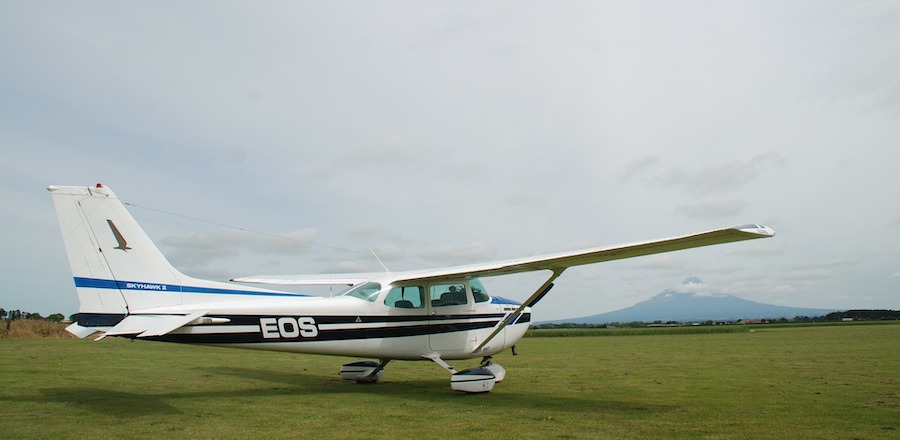How do you become a private pilot?
You must meet the certification requirements. If you look them up, though, they don’t tell you much.
The most they can give you is an overview of the eligibility prerequisites, knowledge areas, and skills.
So, how do you know the specific knowledge areas, flight skills, and aviation nuances?
A great place to start is the private pilot ACS, which stands for Airman Certification Standards. The publication details what the FAA expects you to know, consider, and do to qualify for a private pilot license.
Heard about it?
Maybe you got a general idea, but you need to know everything as getting your license is on the line. More importantly, your safety.
Ready for a deep dive into the ACS?
Awesome, but let’s get your feet wet first.
What is the Private Pilot ACS?
The private pilot Airman Certification Standards (ACS) is an FAA document listing the aeronautical knowledge, risk management, and flight proficiency standards for the knowledge and practical tests. It provides comprehensive guidelines for applicants, instructors, and evaluators (e.g., FAA aviation safety inspector).
The goal?
It’s to ensure the applicant’ has the knowledge, ability, and skill consistent with the privileges of the license. The ultimate purpose, however, is to make sure that a private pilot can operate safely in the National Airspace System (NAS).
It’s a new concept, though.
The Practical Test Standards (PTS) were in effect before the ACS came along in 2016.
Initially, the FAA published the ACS for the airplane private pilot and instrument rating certification.
But the two were the first of many.
The ACS will eventually replace the PTS for all categories and classes.
And the FAA is well on its way as it’s already rolled out editions for remote, commercial, and airline transport pilots.
In a nutshell, the private pilot ACS is an enhanced version of the PTS.
Naturally, you probably wonder:
What was wrong with the PTS?
Why the Switch from PTS to ACS?
The FAA started developing the ACS in 2011 to fix the airman knowledge tests.
You see, too many questions were outdated, irrelevant, or out of step with today’s world. Consequently, a lot of questions had no value for aviation safety, training, and operations.
Why?
The main culprit was the lack of a Knowledge Test Standard (KTS).
The FAA had already developed the Practical Test Standards (PTS), but no corresponding document for aeronautical knowledge existed at that point.
Even the PTS was flawed as it had quite a few repetitive, overlapping, or poorly defined areas.
So, the FAA convened a group of industry experts to solve the problem.
The Airman Testing Standards and Training Aviation Rulemaking Committee was born, and it included representatives from:
- Aviation groups such as the Aircraft Owners and Pilots Association (AOPA)
- Instructor groups such as the National Association of Flight Instructors (NAFI)
- Academia such as the University Aviation Association (UAA)
- Test prep providers
- Manufacturers
- Training providers
- Knowledgeable individuals
Creating a Knowledge Test Standards (KTS) document to accompany the PTS was an initial thought.
But the group discarded the idea due to many reasons.
One of which was that they feared a separate document could cause a divergence between the KTS and the PTS. They were also concerned that developing, implementing, and maintaining an additional publication would overload the FAA’s resources.
So, after careful consideration, the group instead recommended integrating the required aeronautical knowledge and risk management elements into the existing PTS.
The process involved years of development, public comment, and prototyping.
The result was the Airman Certification Standards (ACS), first of which were the (airplane) instrument rating and the private pilot ACS.
What’s Inside the Private Pilot ACS?
The first few pages of the private pilot ACS list revisions, changes, and enhancements to the previous version.
Next, you’ll find a brief introduction and guide to the ACS.
But the main part of the ACS is the areas of operations, starting with preflight procedures and ending with postflight procedures.
Every area of operation comes with a table similar to the following:
Area of Operation
| Task | Appropriate task within the area of operation |
| References | Indication of the source material for the task elements |
| Objective | What the applicant should know, consider, and/or do |
| Knowledge | Areas of aeronautical knowledge relevant to the task |
| ACS Code | Area of aeronautical knowledge corresponding to the ACS code |
| Risk Management | Risks to identify, assess, and mitigate |
| ACS Code | Corresponding risk |
| Skills | Skills such as procedures or maneuvers |
| ACS Code | Corresponding skill element |
Are you wondering about the ACS code? You can check the next section to know all about it.
The Abbreviations within parentheses right after a task refer to the appropriate category or class of the aircraft. For instance, ASEL means Airplane Single-Engine Land.
Furthermore, some areas of operation include notes to emphasize special considerations.
The last part of the private pilot ACS contains appendixes with information on the knowledge and practical tests. Additionally, it lists relevant references, acronyms, and abbreviations.
What is the ACS Code?
The ACS code is a four-part sequence of letters and numbers that represent a unique task element.
Let’s explore those four parts:
1. Applicable ACS
A two-letter code that denotes the applicable Airman Certification Standards. Currently, it’s one of the following:
- (PA): Private Pilot Airplane
- (IR): Instrument Rating Airplane
- (CA): Commercial Pilot Airplane
- (MC): Commercial Pilot — Military Competence
- (AA): Airline Transport Pilot Airplane
- (UA): Unmanned Aircraft Systems
2. Area of Operation
A Roman numeral that indicates the area of operation. For instance, (VIII) corresponds to basic instrument maneuvers.
3. Task
A letter that signifies the task at hand. Each area of operation has one or more tasks arranged in alphabetical order. Here are a few examples:
- Engine Starting (under II. Preflight Procedures)
- Lost Procedures (under VI. Navigation)
- Recovery from Unusual Flight Attitudes (under VIII. Basic Instrument Maneuvers)
4. Task Element
A letter-number combination that refers to the task element. The letter can be one of three: K for knowledge, R for risk management, or S for skill.
Some task elements have sub-elements represented by a lowercase letter at the end, such as (R2c).
Let’s decipher a private pilot ACS code to help you better understand the concept.
Here’s what (PA.I.A.K2) stands for:
- (PA) is the applicable ACS (Private Pilot Airplane)
- (I) is the area of operation (Preflight Preparation)
- (A) is the task (Pilot Qualifications)
- (K2) is the task element (Privileges and Limitations)
Evaluators, such as a Designated Pilot Examiner (DPE), currently conduct the practical test as per the ACS. Moreover, a notice of disapproval for the practical test (in case of failure) uses the ACS codes to indicate the task elements in which the applicant had an unsatisfactory performance.
What about the knowledge test?
Well, the Aeronautical Knowledge Test Report (AKTR) used to show Learning Statement Codes (LSC) for missed questions.
But in January 2020, the FAA started printing the ACS Codes the AKTR for ACS-based tests.
What are the advantages of the ACS codes?
Each represents a unique Task element compared to the Learning Statement Codes (LSC), which link to references and broad subject areas. Therefore, the ASC codes provide better, more specific information to help the applicant prepare for a retest.
One More Thing
Want to know more?
Well, you probably have a good understanding of the private pilot ACS by now.
But if you have questions or are curious about the subject, you have more resources at your disposal.
You can find the latest private pilot ACS along with a briefing, webinar, and frequently asked questions on the FAA website.
You can also take a free online FAA Safety Team course to get acquainted with the ACS in general.
Moreover, Pilotinstitute offers a free ultimate guide to becoming a pilot. The video course covers essential topics, ranging from the types of pilot certificates to how to fund your training.
Are you planning to get your PPL soon?
You may want to check our Private Pilot Made Easy online ground school, which helped nearly 4,000 students ace the knowledge test.
Final Thoughts
Passing the knowledge test used to be no more than a memorization exercise. Applicants would learn the answers by heart, get through the test, and then forget most of it. Many questions had no benefit in modern-day operations.
Therefore, the FAA collaborated with experts in the aviation industry to solve that problem.
However, several flaws in the Practical Test Standards (PTS) came to light in the process.
So, the consensus was to revamp the PTS by adding task-specific knowledge and risk management elements to each area of operation and task in the PTS.
As a result, the FAA and aviation industry partners developed an integrated document that provides standards for the knowledge and practical tests.
The solution for outdated knowledge tests evolved into the modern Airman Certifications Standards.
If you’re about to become a private pilot, make sure you review the private pilot ACS.
Your knowledge test, checkride, and safety depend on it.




